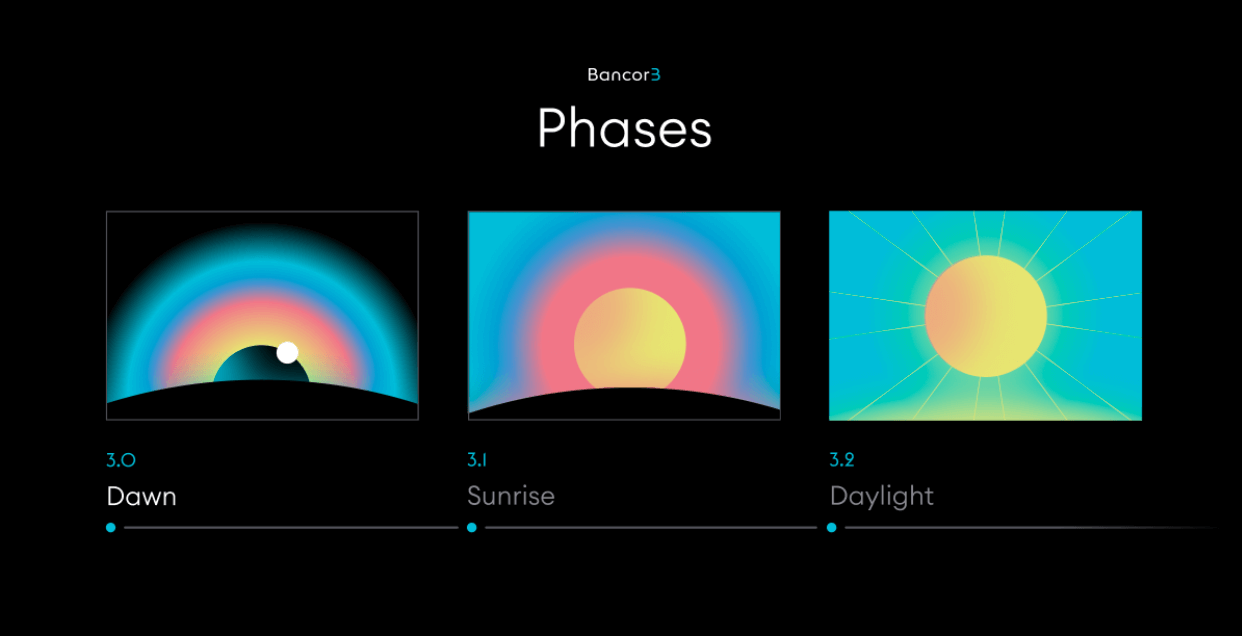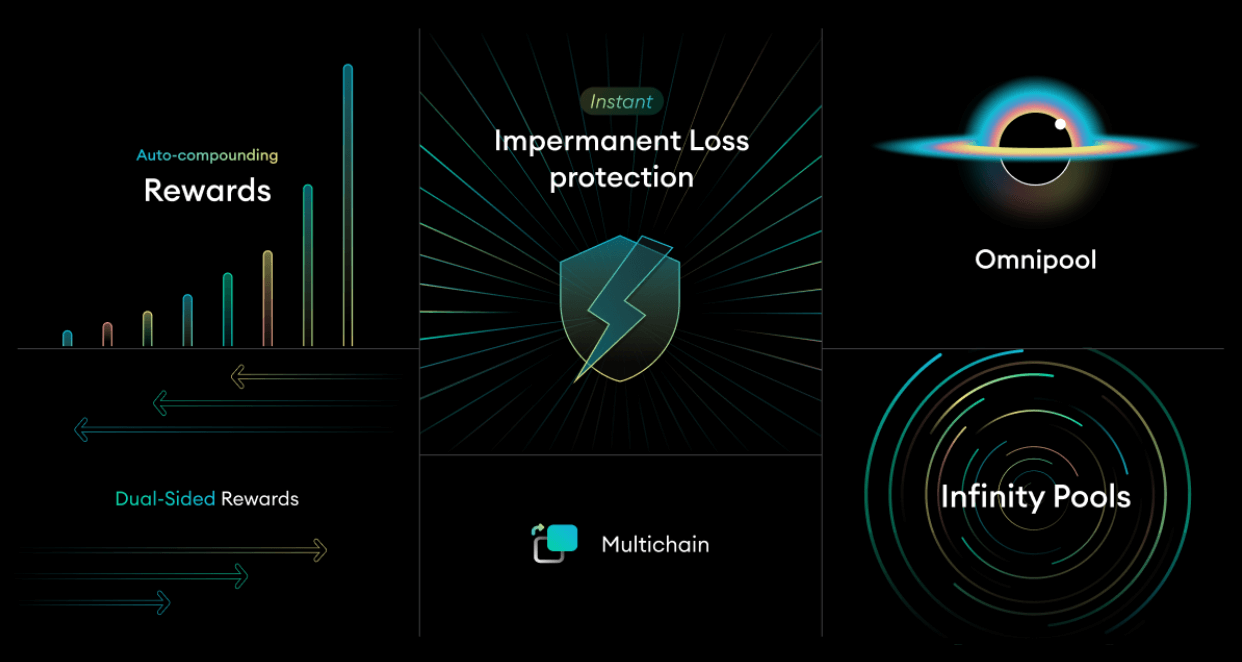 Waiting for the Dawn… When choosing between staking and LP becomes a nightmare
Waiting for the Dawn… When choosing between staking and LP becomes a nightmare Waiting for the Dawn… When choosing between staking and LP becomes a nightmare
Examining some of the cutting-edge features that are being introduced by Bancor’s most radical upgrade to date.

Cover art/illustration via CryptoSlate. Image includes combined content which may include AI-generated content.
Diving into fundamental architecture upgrades coming with Bancor 3–from the introduction of a new type of pool token, to the unleashing of composable liquidity.
Built on Ethereum, Bancor is a decentralized exchange (DEX) that ushered the liquidity pool, pool token, and automated market maker (AMM) concepts into DeFi back in 2017.
Single-sided pool token
Bancor is introducing an array of upgrades that will be rolling out in three stages–dubbed ‘Dawn,’ ‘Sunrise,’ and ‘Daylight.’

Let’s start with the introduction of a novel, single-sided pool token, which is at the center of the Bancor 3 remake.
With the new architecture, the ability to stake single-sided, and the protection from impermanent loss (IL) are about to become an inherent feature of the system, as opposed to being managed by a second layer of contracts.
The original design for standard pool tokens utilizes two values to compute the value of individual tokens in the pool: the total supply of pool tokens and the balance of the tokens inside a liquidity pool Bancor 3 single-sided pool tokens are designed to be agnostic to the true token balances of the network and instead refer to a protocol-wide Staking Ledger that has no knowledge of IL.
As such, the valuation of Bancor 3 pool tokens is unaffected by IL, while fees earned from market-making activities are appended to the Staking Ledger – allowing the pool tokens to appreciate.
With this in mind, contrary to Bancor v2.1 where full IL protection is accumulated by staking tokens in a pool for 100 days or more, Bancor 3 introduces full IL protection from the onset (“Instant IL protection”).
“Superfluid” DeFi Liquidity
By eliminating the IL, Bancor found a remedy for protocols not accepting “pool tokens” as staking collateral.
Due to IL protection and the accrual of trading fees–single-sided pool tokens only rise relative to the HODL value of the underlying asset–which makes them an ideal form of native staking collateral.
According to Nate Hindman, the Head of Growth at Bancor Protocol, Bancor’s proposed solution comes as more DeFi protocols are launching native staking functionality, leaving their token holders with a tough choice: provide liquidity in the native token on a DEX, or natively stake the token in the protocol.
With Bancor 3, users may not need to choose, and this is where the new single-sided pool token design fully shines.
“The idea is simple: on-chain liquidity can be used simultaneously for multiple purposes. Until now, the primitives haven’t existed to support it, but that may be changing with the upcoming release of Bancor 3’s single-sided pool tokens–and it could pave the way for a brand new approach to composable liquidity–one in which LPs don’t need to decide between earning yield in AMMs and natively staking their tokens. They can do both,” explained Hindman.
According to him, it all starts with third-party protocols accepting Bancor’s single-sided pool tokens as native staking collateral. For example, Synthetix could accept bnSNX (a single-sided pool token generated when a user deposits SNX in a Bancor 3 pool) as staking collateral in the Synthetix Protocol.
“Synthetix could, theoretically, support bnSNX as native staking collateral in Synthetix. As a result, users would be able to deposit SNX in the SNX pool on Bancor, generate bnSNX pool tokens and then stake the bnSNX in Synthetix,” Hindman clarified.
This essentially allows DeFi users to simultaneously unlock yield at both sides–accruing trading fees from Bancor, while tapping into native staking rewards from the third-party protocol.
“Omnipool” and “Infinity Pools”
Besides the Staking Ledger, the new architecture also introduces a vault-style organization of the protocol.

Going forward, Bancor Network will store all tokens from across the network, including its BNT in a single contract, instead of storing its tokens in liquidity pools. However, the illusion of individual liquidity pools will remain–containing nothing more than the pool logic.
Bancor is calling these features the “Omnipool” and “Infinity Pools” in the Dawn phase.
In contrast to the previous version, which required trades to be processed via BNT, creating an extra transaction and added gas costs, the new version’s Omnipool will allow all trades on the network to happen in a single transaction–reducing gas costs, which makes liquidity staked on the protocol more capital efficient.
In the current version of Bancor, users have to wait until space opens up in a pool before they are allowed to deposit their tokens, but with the introduction of Infinity Pools these limits are gone, and anyone can contribute as much as they like.
In the current version, only Bancor could stimulate its liquidity pools with BNT rewards. In Bancor 3, depositors stand to profit from dual-sided rewards in Bancor 3, as third-party protocols can also offer rewards in their own native token on their pools.
Additionally, users won’t have to manually re-add their rewards to the pool, which costs them gas each time, since in Bancor 3 both trading fees and liquidity mining rewards are auto-compounding.
This means that earnings are instantly re-added to the pool–improving the network’s liquidity and increasing users’ potential to passively earn more fees and rewards.
Finally, with the proposed upgrade, BancorDAO gains the power to not only provide protocol-owned BNT to its pools and generate fees for the protocol, but also to vote on shrinking the protocol-owned BNT in any pool that’s under-performing, and redirect the protocol’s liquidity to more profitable pools.
Among other cutting-edge features that are being ushered in by Bancor’s biggest proposed update to date also include multichain and Layer 2 support, as well as the integration of Chainlink Keepers, to enable more efficient token burning and withdrawals.
The radical redesign will come accompanied by a revamped front-end, allowing a single-click migration from Bancor V2.1 to Bancor 3.



 Farside Investors
Farside Investors 


 CoinGlass
CoinGlass 

























































































